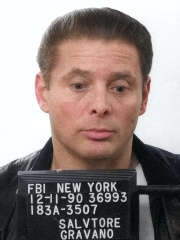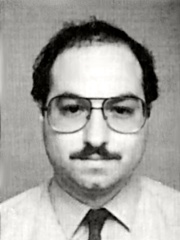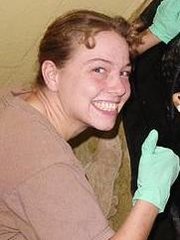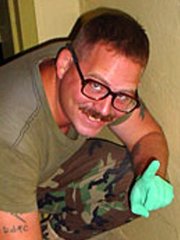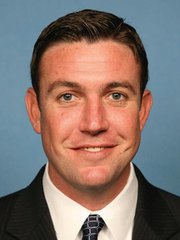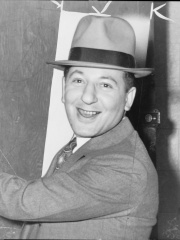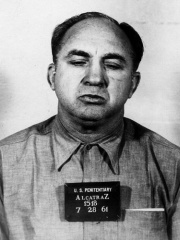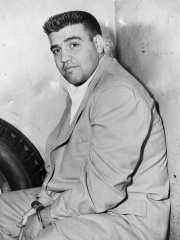


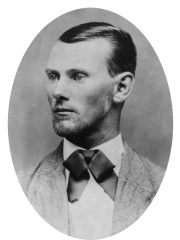
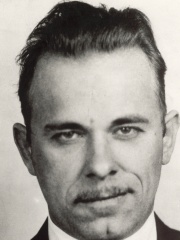
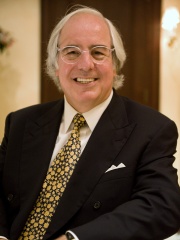
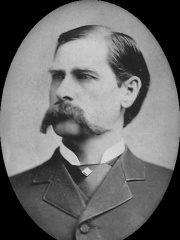
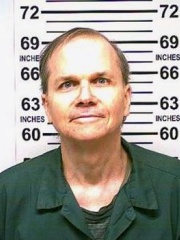
The Most Famous
MAFIOSOS from United States
This page contains a list of the greatest American Mafiosos. The pantheon dataset contains 70 Mafiosos, 30 of which were born in United States. This makes United States the birth place of the most number of Mafiosos.
Top 10
The following people are considered by Pantheon to be the top 10 most legendary American Mafiosos of all time. This list of famous American Mafiosos is sorted by HPI (Historical Popularity Index), a metric that aggregates information on a biography's online popularity. Visit the rankings page to view the entire list of American Mafiosos.

1. Al Capone (1899 - 1947)
With an HPI of 81.56, Al Capone is the most famous American Mafioso. His biography has been translated into 82 different languages on wikipedia.
Alphonse Gabriel Capone ( kə-POHN; Italian: [kaˈpoːne]; January 17, 1899 – January 25, 1947), sometimes known by the nickname "Scarface", was an American gangster and businessman who attained notoriety during the Prohibition era as the co-founder and boss of the Chicago Outfit from 1925 to 1931. His seven-year reign as a crime boss ended when he was imprisoned at the age of 33. Capone was born in New York City in 1899 to Italian immigrants. He joined the Five Points Gang as a teenager and became a bouncer in organized crime premises such as brothels. In his early twenties, Capone moved to Chicago and became a bodyguard of Johnny Torrio, head of a criminal syndicate that illegally supplied alcohol—the forerunner of the Outfit—and was politically protected through the Unione Siciliana. A conflict with the North Side Gang was instrumental in Capone's rise and fall. Torrio went into retirement after North Side gunmen almost killed him, handing control to Capone. Although Capone expanded the bootlegging business through increasingly violent means, his mutually profitable relationships with Mayor William Hale Thompson and the Chicago Police Department meant he seemed safe from law enforcement. Capone apparently reveled in attention, such as the cheers from spectators when he appeared at baseball games. He made donations to various charities and was viewed by many as a "modern-day Robin Hood". The Saint Valentine's Day Massacre, in which seven people from rival gangs were murdered in broad daylight, damaged the public image of Chicago and Capone, leading influential citizens to demand government action and newspapers to dub Capone "Public Enemy No. 1". Federal authorities became intent on jailing Capone and charged him with twenty-two counts of tax evasion. He was convicted of five counts in 1931. During a highly publicized case, the judge admitted as evidence Capone's admissions of his income and unpaid taxes, made during prior and ultimately abortive negotiations to pay the government taxes he owed. He was convicted and sentenced to eleven years in federal prison. After conviction, he replaced his defense team with experts in tax law, and his grounds for appeal were strengthened by a U.S. Supreme Court ruling, although his appeal ultimately failed. Capone showed signs of neurosyphilis early in his sentence and became increasingly debilitated before being released after almost eight years of incarceration. In 1947, he died of cardiac arrest after a stroke.

2. Billy the Kid (1859 - 1881)
With an HPI of 75.91, Billy the Kid is the 2nd most famous American Mafioso. His biography has been translated into 61 different languages.
Henry McCarty (September 17 or November 23, 1859 – July 14, 1881), alias William H. Bonney, better known as Billy the Kid, was an American outlaw and gunfighter of the Old West who was linked to nine murders, four for which he was solely responsible, and five in which he may have played a role alongside others. He is also noted for his involvement in New Mexico's Lincoln County War. McCarty was orphaned at the age of 15. His first arrest was for stealing food at the age of 16 in 1875. Ten days later, he robbed a Chinese laundry and was arrested again but escaped shortly afterwards. He fled from New Mexico Territory into neighboring Arizona Territory, making himself both an outlaw and a federal fugitive. In 1877 he began to call himself "William H. Bonney". After killing a blacksmith during an altercation in August 1877, Bonney became a wanted man in Arizona and returned to New Mexico, where he joined a group of cattle rustlers. He became well known in the region when he joined the Regulators and took part in the Lincoln County War of 1878. He and two other Regulators were later charged with killing three men, including Lincoln County Sheriff William J. Brady and one of his deputies. Bonney's notoriety grew in December 1880 when the Las Vegas Gazette, in Las Vegas, New Mexico, and The Sun, in New York City, carried stories about his crimes. Sheriff Pat Garrett captured Bonney later that month. In April 1881, Bonney was tried for and convicted of Brady's murder, and was sentenced to hang in May of that year. He escaped from jail on April 28, killing two sheriff's deputies in the process, and evaded capture for more than two months. Garrett shot and killed Bonney, by then aged 21, in Fort Sumner on July 14, 1881. During his short career as an outlaw, Bonney was the subject of numerous U.S. newspaper articles, some as far away as New York. During the decades following his death, stories spread that Bonney had survived, and a number of men claimed to be him. The legend of Billy the Kid endures in American culture, and he remains one of the most notorious figures from the era, whose life and likeness have been frequently dramatized in the Western genre. He has been a feature of more than 50 movies and several television series.

3. Frank Lucas (1930 - 2019)
With an HPI of 73.92, Frank Lucas is the 3rd most famous American Mafioso. His biography has been translated into 21 different languages.
Frank Lucas (September 9, 1930 – May 30, 2019) was an American drug lord who operated in Harlem, New York City, during the late 1960s and early 1970s. He was known for cutting out middlemen in the drug trade and buying heroin directly from his source in the Golden Triangle in Southeast Asia. Lucas boasted that he smuggled heroin using the coffin pallets of dead American servicemen, as depicted in the feature film American Gangster (2007), which fictionalized aspects of his life. This claim was denied by his Southeast Asian associate Leslie "Ike" Atkinson. In 1976, Lucas was convicted of drug trafficking and sentenced to 70 years in prison, but after becoming an informant, he and his family were placed in the Witness Protection Program. In 1981, his federal and state prison sentences were reduced to time served plus lifetime parole. In 1984, he was convicted a second time for drug offenses, and was released from prison in 1991. In 2012, he pleaded guilty to attempting to cash a $17,000 federal disability benefit check twice, and because of his age and poor health, received a sentence of five years' probation.

4. Jesse James (1847 - 1882)
With an HPI of 73.31, Jesse James is the 4th most famous American Mafioso. His biography has been translated into 54 different languages.
Jesse Woodson James (September 5, 1847 – April 3, 1882) was an American outlaw, bank and train robber, guerrilla and leader of the James–Younger Gang. Raised in the "Little Dixie" area of Missouri, James and his family maintained strong Southern sympathies. He and his brother Frank James joined pro-Confederate guerrillas known as "bushwhackers" operating in Missouri and Kansas during the American Civil War. As followers of William Quantrill and "Bloody Bill" Anderson, they were accused of committing atrocities against Union soldiers and civilian abolitionists, including the Centralia Massacre in 1864. After the war, as members of various gangs of outlaws, Jesse and Frank robbed banks, stagecoaches, and trains across the Midwest, gaining national fame and often popular sympathy despite the brutality of their crimes. The James brothers were most active as members of their own gang from about 1866 until 1876, when as a result of their attempted robbery of a bank in Northfield, Minnesota, several members of the gang were captured or killed. They continued in crime for several years afterward, recruiting new members, but came under increasing pressure from law enforcement seeking to bring them to justice. On April 3, 1882, Jesse James was shot and killed by Robert Ford, a new recruit to the gang who hoped to collect a reward on James' head and a promised amnesty for his previous crimes. Already a celebrity in life, James became a legendary figure of the Wild West after his death. Popular portrayals of James as an embodiment of Robin Hood, robbing from the rich and giving to the poor, are a case of romantic revisionism as there is no evidence his gang shared any loot from their robberies with anyone outside their network. Scholars and historians have characterized James as one of many criminals inspired by the regional insurgencies of ex-Confederates following the Civil War, rather than as a manifestation of alleged economic justice or of frontier lawlessness. James continues to be one of the most famous figures from the era, and his life has been dramatized and memorialized numerous times.
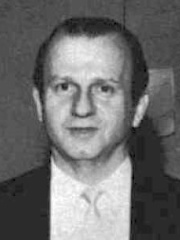
5. Jack Ruby (1911 - 1967)
With an HPI of 72.96, Jack Ruby is the 5th most famous American Mafioso. His biography has been translated into 51 different languages.
Jack Leon Ruby (born Jacob Leon Rubenstein; c. March 25, 1911 – January 3, 1967) was an American nightclub owner who murdered Lee Harvey Oswald on November 24, 1963, two days after Oswald was arrested for the assassination of President John F. Kennedy. Born in Chicago, Ruby operated nightclubs in Texas. On November 24, 1963, two days after Kennedy was assassinated in Dallas, Ruby shot and mortally wounded Oswald in Dallas Police Headquarters and was immediately arrested. The shooting happened on live television. Ruby was convicted and sentenced to death. This was overturned on appeal, and he was granted a new trial, but Ruby fell ill, was diagnosed with cancer, and died of a pulmonary embolism on January 3, 1967. In 1964, the Warren Commission concluded that there was no evidence Ruby was part of a conspiracy; despite this, Ruby's murder of Oswald has stoked assassination conspiracy theories.

6. John Dillinger (1903 - 1934)
With an HPI of 71.17, John Dillinger is the 6th most famous American Mafioso. His biography has been translated into 43 different languages.
John Herbert Dillinger (; June 22, 1903 – July 22, 1934) was an American gangster during the Great Depression. He commanded the Dillinger Gang, which was accused of robbing twenty-four banks and four police stations. Dillinger was imprisoned several times and escaped twice. He was charged with but not convicted of the murder of East Chicago, Indiana, police officer William O'Malley, who shot Dillinger in his bulletproof vest during a shootout; it was the only time Dillinger was charged with homicide. Dillinger courted publicity. The media printed exaggerated accounts of his bravado and colorful personality, and described him as a Robin Hood-type figure. In response, J. Edgar Hoover, director of the Bureau of Investigation (BOI), used Dillinger as justification to evolve the BOI into the Federal Bureau of Investigation (FBI), developing more sophisticated investigative techniques as weapons against organized crime. After evading police in four states for almost a year, Dillinger was wounded in a gunfight and went to his father's home to recover. His Michigan hideout was in Charlevoix, Michigan. He returned to Chicago in July 1934 and sought refuge in a brothel owned by Ana Cumpănaș, who later informed authorities of his whereabouts. On July 22, 1934, local and federal law-enforcement officers closed in on the Biograph Theater. When BOI agents moved to arrest Dillinger as he left the theater, he attempted to flee but was fatally shot; the lethal use of force by the agents would eventually be ruled justifiable homicide.

7. Frank Abagnale (b. 1948)
With an HPI of 70.74, Frank Abagnale is the 7th most famous American Mafioso. His biography has been translated into 42 different languages.
Frank William Abagnale Jr. (; born April 27, 1948) is an American-French security consultant, author, and convicted felon who committed frauds that mainly targeted individuals and small businesses. He later gained notoriety in the late 1970s by claiming a diverse range of workplace frauds, many of which have since been placed in doubt. In 1980, Abagnale co-wrote his autobiography, Catch Me If You Can, which built a narrative around these claimed frauds. The book inspired the film of the same name directed by Steven Spielberg in 2002, in which Abagnale was portrayed by Leonardo DiCaprio. He has also written four other books. Abagnale runs Abagnale and Associates, a consulting firm. Abagnale claims to have worked as an assistant attorney general in the U.S. state of Louisiana, served as a hospital physician in Georgia, and impersonated a Pan American World Airways pilot who logged over two million air miles by deadheading. The veracity of most of Abagnale's claims has been questioned, and ongoing inquiries continue to confirm that they were fabricated. In 2002, Abagnale admitted on his website that some facts had been overdramatized or exaggerated, though he was not specific about what was exaggerated or omitted about his life. In 2020, journalist Alan C. Logan claimed to have found evidence that proves the majority of Abagnale's story was invented or at best exaggerated.

8. Wyatt Earp (1848 - 1929)
With an HPI of 68.87, Wyatt Earp is the 8th most famous American Mafioso. His biography has been translated into 42 different languages.
Wyatt Berry Stapp Earp (March 19, 1848 – January 13, 1929) was an American lawman and an assistant marshal to his brother, Virgil Earp. Earp was involved in the gunfight at the O.K. Corral, during which he and other lawmen killed three outlaws. While Earp is usually depicted as the key figure in the shootout, his brother Virgil was both the U.S. Marshal and the Tombstone city marshal and had decided to enforce a city ordinance prohibiting carrying weapons in public and to disarm the Cowboys. In 1874, Earp arrived in the boomtown of Wichita, Kansas, where his reputed wife opened a brothel. At this brothel, Earp was arrested more than once, as he may have been a pimp. He was appointed to the Wichita police force and developed a good reputation as a lawman but was "not rehired as a police officer" after a physical altercation with a political opponent of his boss. Earp left Wichita, following his brother James to Dodge City, Kansas, where his brother's wife Bessie and Earp's common-law wife Sally operated a brothel. In this city, he became an assistant city marshal. In 1878, he went to Texas to track down an outlaw, Dave Rudabaugh, and met John "Doc" Holliday, whom Wyatt credited with saving his life. Earp moved between boom towns. He left Dodge in 1879 and moved with brothers James and Virgil to Tombstone, Arizona, where a silver boom was underway. The Earps held law enforcement positions that put them in conflict with an outlaw group known as the "Cowboys", who threatened to kill the Earps on several occasions. The conflict escalated, culminating in the shootout at the O.K. Corral in 1881, where the Earps and Doc Holliday killed three Cowboys. During the next five months, Virgil was ambushed and maimed, and Morgan was murdered. Earp, Warren Earp, Doc Holliday, and others formed a federal posse that killed three more Cowboys whom they thought responsible. Earp was never wounded in any of the gunfights, unlike his brothers Virgil and Morgan or Doc Holliday, which added to his mystique after his death. After leaving Tombstone, Earp went to San Francisco, where he reunited with Josephine Marcus, and they later joined a gold rush to Eagle City, Idaho. In San Francisco, Earp raced horses, but his reputation suffered when he refereed the Fitzsimmons vs. Sharkey boxing match and called a foul, leading many to believe he had fixed the fight. Earp and Marcus joined the Nome Gold Rush in 1899. He and Charlie Hoxie opened the Dexter saloon, and made an estimated $80,000 (equivalent to $3,024,000 in 2024). At the time, Josephine had a gambling habit, and the money did not last. Around 1911, Earp began working mining claims in Vidal, California, retiring in the summers with Josephine to one of several cottages they rented in Los Angeles. He made friends among Western actors in Hollywood to try and get his story told, but was portrayed during his lifetime only briefly in one film: Wild Bill Hickok (1923). Earp died in 1929, notorious for his handling of the Fitzsimmons–Sharkey fight and role in the O.K. Corral gunfight. This changed only after his death when the flattering biography Wyatt Earp: Frontier Marshal by Stuart N. Lake was published in 1931, becoming a bestseller and creating his reputation as a fearless lawman. Since then, Earp's fame and notoriety have been increased by films, television shows, biographies, and works of fiction. Long after his death, he has many devoted detractors and admirers.

9. Mark David Chapman (b. 1955)
With an HPI of 68.43, Mark David Chapman is the 9th most famous American Mafioso. His biography has been translated into 47 different languages.
Mark David Chapman (born May 10, 1955) is an American man who murdered musician John Lennon in New York City on December 8, 1980. As Lennon walked into the archway of the Dakota, his apartment building on the Upper West Side, Chapman fired five shots at him from a few yards away with a Charter Arms Undercover .38 Special revolver; Lennon was hit four times from the back. He was rushed to Roosevelt Hospital and pronounced dead on arrival. Chapman remained at the scene following the shooting and made no attempt to flee or resist arrest. Raised in Decatur, Georgia, Chapman was initially a fan of the Beatles but was infuriated by Lennon's lavish lifestyle, the lyrics of "God" and "Imagine", and public statements such as his remark about the band being "more popular than Jesus". In the years leading up to the murder, the J. D. Salinger novel The Catcher in the Rye took on great personal significance for Chapman, to the extent that he wished to model his life after the novel's protagonist, Holden Caulfield. Chapman also contemplated killing other public figures, including David Bowie, Johnny Carson, Jacqueline Kennedy Onassis, Elizabeth Taylor, Paul McCartney, and Ronald Reagan. He had no prior criminal convictions and had recently resigned from a job as a security guard in Hawaii. Chapman's legal team initially intended to mount an insanity defense based on the testimony of mental health experts who said that he was in a delusional psychotic state at the time of the shooting. However, he was more cooperative with the prosecutor, who argued that his symptoms fell short of a schizophrenia diagnosis. As the trial approached, Chapman instructed his lawyers that he wanted to plead guilty to murder based on what he had decided was the will of God. The judge granted Chapman's request and deemed him competent to stand trial. He was sentenced to a prison term of 20 years to life with a stipulation that mental health treatment would be provided. Chapman refused requests for press interviews during his first six years in prison; he later said that he regretted the murder and that he did not want to give the impression that he killed Lennon for fame and notoriety. He ultimately supplied audiotaped interviews to journalist Jack Jones, who used them to write the investigative book Let Me Take You Down: Inside the Mind of Mark David Chapman in 1992. In 2000, Chapman became eligible for parole, which has since been denied fourteen times.
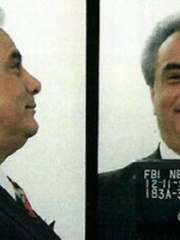
10. John Gotti (1940 - 2002)
With an HPI of 67.70, John Gotti is the 10th most famous American Mafioso. His biography has been translated into 37 different languages.
John Joseph Gotti Jr. ( GOT-ee, Italian: [ˈɡɔtti]; October 27, 1940 – June 10, 2002) was an American mafioso and boss of the Gambino crime family in New York City. He ordered and helped to orchestrate the murder of Gambino boss Paul Castellano in December 1985 and took over the family shortly thereafter, leading what was described as the most powerful crime syndicate in the United States. Gotti and his brothers grew up in poverty and turned to a life of crime at an early age. Gotti quickly became one of the Gambino family's biggest earners and a protégé of Aniello Dellacroce, the family's underboss, operating out of Ozone Park, Queens. Following the FBI's indictment of members of Gotti's crew for selling narcotics, Gotti began to fear that Castellano would kill him and his brother Gene for dealing drugs. As this fear continued to grow, and amidst growing dissent over the leadership of the family, Gotti arranged the mutiny murder of Castellano. At his peak, Gotti was one of the most powerful and dangerous crime bosses in the United States. While his peers generally avoided attracting attention, especially from the media, Gotti became known as "the Dapper Don" for his expensive clothes and outspoken personality in front of news cameras. He was later given the nickname "the Teflon Don" after three high-profile trials in the 1980s resulted in acquittals, though it was later revealed that the trials had been tainted by jury tampering, juror misconduct and witness intimidation. Law enforcement continued gathering evidence against Gotti, who reportedly earned between $5 million and $20 million per year as Gambino boss. Gotti's underboss, Salvatore "Sammy the Bull" Gravano, aided the FBI in convicting Gotti; in 1991, Gravano agreed to turn state's evidence and testify against Gotti after hearing the boss make disparaging remarks about him on a wiretap that implicated them both in several murders. In 1992, Gotti was convicted of five murders, conspiracy to commit murder, racketeering, obstruction of justice, tax evasion, illegal gambling, extortion and loansharking. He received life in prison without parole and was transferred to United States Penitentiary, Marion, in Illinois. Gotti died of throat cancer on June 10, 2002, at the United States Medical Center for Federal Prisoners in Springfield, Missouri. According to Anthony "Gaspipe" Casso, the former underboss of the Lucchese crime family, "what John Gotti did was the beginning of the end of Cosa Nostra."
People
Pantheon has 30 people classified as American mafiosos born between 1847 and 1978. Of these 30, 8 (26.67%) of them are still alive today. The most famous living American mafiosos include Frank Abagnale, Mark David Chapman, and Sammy Gravano. The most famous deceased American mafiosos include Al Capone, Billy the Kid, and Frank Lucas. As of April 2024, 5 new American mafiosos have been added to Pantheon including Steven Avery, Sabrina Harman, and Charles Graner.
Living American Mafiosos
Go to all RankingsFrank Abagnale
1948 - Present
HPI: 70.74
Mark David Chapman
1955 - Present
HPI: 68.43
Sammy Gravano
1945 - Present
HPI: 58.46
Jonathan Pollard
1954 - Present
HPI: 54.71
Steven Avery
1962 - Present
HPI: 49.47
Sabrina Harman
1978 - Present
HPI: 47.54
Charles Graner
1968 - Present
HPI: 44.24
Duncan D. Hunter
1976 - Present
HPI: 28.57
Deceased American Mafiosos
Go to all RankingsAl Capone
1899 - 1947
HPI: 81.56
Billy the Kid
1859 - 1881
HPI: 75.91
Frank Lucas
1930 - 2019
HPI: 73.92
Jesse James
1847 - 1882
HPI: 73.31
Jack Ruby
1911 - 1967
HPI: 72.96
John Dillinger
1903 - 1934
HPI: 71.17
Wyatt Earp
1848 - 1929
HPI: 68.87
John Gotti
1940 - 2002
HPI: 67.70
Lepke Buchalter
1897 - 1944
HPI: 65.27
Sundance Kid
1867 - 1908
HPI: 64.34
Mickey Cohen
1913 - 1976
HPI: 62.49
Vincent Gigante
1928 - 2005
HPI: 62.23
Newly Added American Mafiosos (2025)
Go to all RankingsSteven Avery
1962 - Present
HPI: 49.47
Sabrina Harman
1978 - Present
HPI: 47.54
Charles Graner
1968 - Present
HPI: 44.24
Murder of Adam Walsh
1974 - 1981
HPI: 40.72
Duncan D. Hunter
1976 - Present
HPI: 28.57
Overlapping Lives
Which Mafiosos were alive at the same time? This visualization shows the lifespans of the 22 most globally memorable Mafiosos since 1700.

